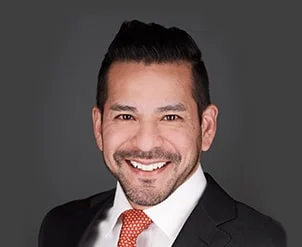Protecting Your Social Security Benefits In Bankruptcy

Since the Social Security Act became law in the 1930s, Social Security has grown into one of the largest government programs ever. Almost seventy million people receive Social Security payments each year. These recipients include age-based Social Security Income payments and health-based Social Security Disability payments.
Typically, these families count on Social Security benefits for much of, or even most of, their monthly income. Furthermore, these families often face significant financial stress. Folks over 60 are filing bankruptcy at record rates, mostly because of sky-high medical bills and a Social Security COLA (cost of living adjustment) that usually doesn’t keep up with inflation.
In general, Hoosiers cannot protect their income when they file bankruptcy. Usually, income becomes part of the bankruptcy estate. But Social Security benefits are different. These payments are legally exempt under federal law. Furthermore, a Chicago bankruptcy lawyer can help families maximize this exemption.
Benefits of Bankruptcy
Families who receive SSD or SSI benefits shouldn’t let fear of losing these benefits keep them from filing a necessary Chapter 7 or Chapter 13 bankruptcy. Briefly, Chapter 7 eliminates most unsecured debts, such as unpaid medical bills, within about six months. Chapter 13 gives families up to five years to bring delinquent secured debts, like mortgage payments, current.
The benefits of bankruptcy are considerable, starting with the Automatic Stay. The instant families file their voluntary petitions, Section 362 of the Bankruptcy Code prohibits most creditor adverse actions, including:
- Collection lawsuits,
- Foreclosure,
- Wage garnishment,
- Eviction,
- Utility shutoff, and
- Repossession.
Usually, the Automatic Stay remains in place until the judge closes the bankruptcy. Furthermore once the protection of Section 362 ends, creditors cannot simply pick up where they left off. Instead, they must normally start over from the beginning before they can repossess collateral or take any other aforementioned adverse actions.
Indiana is a non-judicial foreclosure state. So, in many cases, creditors do not need court orders to take these actions. Filing bankruptcy protects your assets, such as:
- Government benefits,
- Home equity,
- Motor vehicle,
- Personal property, and
- Retirement account.
The first and last bullet points are frequently the most important ones for older Hoosiers who file bankruptcy.
We mentioned the government benefit exemption above. It usually applies not only to Social Security payments, but to all other state and federal assistance programs. Furthermore, the Supreme Court recently confirmed that all retirement nest egg accounts, such as pension plans and IRAs, are 100 percent exempt, regardless of their value.
Social Security Exemption Strategies
Active and passive income is usually nonexempt in Indiana. If exempt funds, like Social Security payments, become commingled with nonexempt funds, such as wage income, it’s hard to distinguish between the two.
So, to protect your exempt assets, our Chicago bankruptcy lawyers usually recommend that you place them in a separate account. If your payments are direct deposited, and they probably are, the change is relatively seamless. Always talk to your lawyer before making such financial changes. If you make these moves within 90 days of filing bankruptcy, they are presumptively fraudulent. A bankruptcy fraud action, even a meritless one, is an additional headache distressed debtors do not need.
Reach out to Diligent Cook County Lawyers
No matter what kind of financial problem you are having, bankruptcy could be a way out. For a free consultation with an experienced bankruptcy attorney in Chicago, contact the Bentz Holguin Law Firm, LLC.
Resource:
ssa.gov/policy/docs/chartbooks/fast_facts/2021/fast_facts21.html


